Pan-Cancer Analysis of the Prognostic and Immunological Role of SEMA7A
- PMID: 39735166
- PMCID: PMC11682669
- DOI: 10.2147/IJGM.S499872
Pan-Cancer Analysis of the Prognostic and Immunological Role of SEMA7A
Abstract
Background: Semaphorin7A (SEMA7A) has been found to regulate both nerve and vessel homeostasis, but its specific role in pan-cancer remains uncertain. This research seeks to delve into the function and clinical relevance of SEMA7A in pan-cancer.
Methods: Through an analysis of gene expression omnibus and the cancer genome atlas datasets, we investigated the impact of SEMA7A on prognosis and immune regulation across 33 types of tumors. Variations in SEMA7A expression were observed between cancerous and adjacent normal tissues, with a notable correlation between SEMA7A levels and patient prognosis.
Results: Across most cancer types, SEMA7A expression was linked to the infiltration of immune cells, as well as immune checkpoints and other immune regulators. The findings were further confirmed through quantitative real-time polymerase chain reaction analysis of SEMA7A expression in breast cancer. Further, SEMA7A is positively associated with prognosis in different cancers. Additionally, SEMA7A expression was associated with TMB and MSI in some cancer types, while in 15 types of cancer, there was a correlation between SEMA7A expression and DNA methylation. SEMA7A was associated with the expression of multiple immune checkpoint genes and abundance of tumor-infiltrating immune cells across multiple types of cancer.
Conclusion: This inaugural pan-cancer examination of SEMA7A sheds light on its prognostic and immunological significance in diverse tumor types, suggesting its potential utility as a biomarker for predicting unfavorable outcomes and immune cell infiltration in cancer.
Keywords: SEMA7A; immune cell infiltration; pan-cancer; prognosis.
© 2024 Yang et al.
Conflict of interest statement
The authors declare no competing interests.
Figures
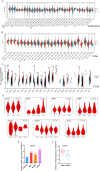
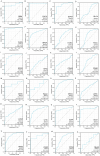
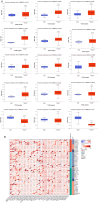


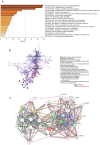


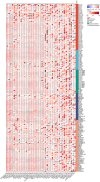


Similar articles
-
SEMA7A as a Novel Prognostic Biomarker and Its Correlation with Immune Infiltrates in Breast Cancer.Int J Gen Med. 2024 Sep 14;17:4081-4099. doi: 10.2147/IJGM.S474827. eCollection 2024. Int J Gen Med. 2024. PMID: 39295856 Free PMC article.
-
Multiomic characterization, immunological and prognostic potential of SMAD3 in pan-cancer and validation in LIHC.Sci Rep. 2025 Jan 3;15(1):657. doi: 10.1038/s41598-024-84553-3. Sci Rep. 2025. PMID: 39753728 Free PMC article.
-
UBR1 is a prognostic biomarker and therapeutic target associated with immune cell infiltration in gastric cancer.Aging (Albany NY). 2024 Aug 23;16(16):12029-12049. doi: 10.18632/aging.206079. Epub 2024 Aug 23. Aging (Albany NY). 2024. PMID: 39181686 Free PMC article.
-
A comprehensive pan-cancer analysis revealing the role of ITPRIPL1 as a prognostic and immunological biomarker.Front Mol Biosci. 2024 Aug 15;11:1452290. doi: 10.3389/fmolb.2024.1452290. eCollection 2024. Front Mol Biosci. 2024. PMID: 39211744 Free PMC article.
-
Pan-cancer analysis of the prognostic and immunological role of GJB2: a potential target for survival and immunotherapy.Front Oncol. 2023 Jun 23;13:1110207. doi: 10.3389/fonc.2023.1110207. eCollection 2023. Front Oncol. 2023. PMID: 37427102 Free PMC article. Review.
Cited by
-
Study on Immune-Related Genes and Clinical Validation of Acute Myocardial Infarction Based on Bioinformatics.Biochem Genet. 2025 Jan 16. doi: 10.1007/s10528-025-11029-y. Online ahead of print. Biochem Genet. 2025. PMID: 39820825
References
LinkOut - more resources
Full Text Sources

